When pessimism feels prophetic, doom and gloom seemingly inevitable, there’s always the glittery distraction of a musical like Cabaret. Or so it seems. What appears to be a chance to look away from nightmares turns the eye straight towards a piercing needle.
Cabaret, the musical, based on a play adapted from a novel, hit the silver screen in 1972. For fifty years, it’s stood not simply as colorful entertainment full of memorable music, but a bittersweet testament to the myriad ways happiness drowns. It drowns out the sound of mad, murderous things in the dark eating the light alive, and drowning is how happiness dies. Such is the sad, yet rousing, truth in Cabaret.

Set in the closing days of the Weimar Republic, when Nazis rose to power, Cabaret is the story of Sally Bowles and Brian Roberts. Sally is an effusive singer at a seedy dive called The Kit Kat Klub, and Brian is a reserved British expatriate recently arrived in Germany. When they meet it seems the start of a prototypical manic pixie girl romcom, but the story soon evolves into something more complex. And of course, there’s singing, dancing, and burlesque.
Dollars to donuts many don’t consider musicals more than saccharin distraction. It’s not that such theatricals haven’t tackled serious issues. From Company to Rent and recently Hamilton, this style of storytelling is capable of handling heavy material. However, typically, musicals are lighthearted affairs.
Performers sing-state their feelings, comic situations ensue, and any heartbreak is mended by the final act. Whatever weight there is gets lifted off before it crushes. The only real tragedy is the closing curtain sending the audience back to grim reality. That’s not the case with Cabaret.
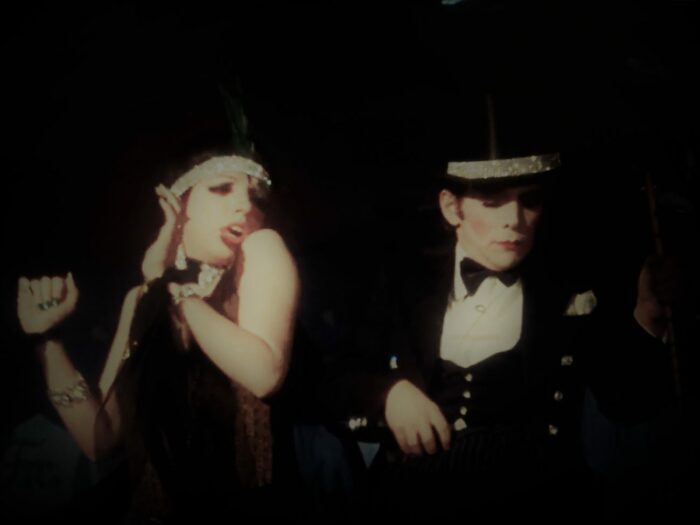
The story’s evolution into film starts with a book by writer Christopher Isherwood called Goodbye to Berlin. Released in 1939, the novel is essentially several short stories linked together in an episodic manner. Narratives are shared by a British expatriate living in Berlin from 1930 to 1933. A semi-autobiographical stand-in for Isherwood, this character encounters various individuals and settings which would become targets for the rising Nazis regime.
Goodbye to Berlin is a magical mix of history and fabrication in which Isherwood weaves a world simultaneously real and fictive. The landscape of the Weimar Republic presented an incomparable palate to paint portraits of hedonism and hypocrisy against a backdrop of slow creeping, bloodthirsty fascism. It’s the sun setting on good times which may not have been as carefree as people liked to believe. And nothing encapsulates this willful denial like the insouciant Sally Bowles.
Inspired by the remarkable Jean Ross, Sally is someone who doesn’t want the party to end even though festivities clearly stopped hours ago. Like Ross, Sally earns a living singing in a dive bar cabaret, although neither is apparently that good a singer. Sally traipses around town in shabby furs and vivid colors, the poster perfect prototype for the expression fake it till you make it. Her oblivious optimism gleefully ignores where her lack of talent will take her as well as the grim portent of fascists literally flying red flags. She’s infectious in that respect, carrying the temptation of blissful ignorance — there’s no need to acknowledge the ugly side of life. As Ingrid Norton wrote, “Her naiveté is both charming and unnerving.”

Isherwood offered compelling depictions of “the eclectic and decadent liberalism of the popular Weimar cabaret” as well as the “diverse range of individuals whom… would soon be stamped out in favor of more sanctioned, ideologically charged forms of Nazis public life.” So much so that the novel inspired playwright John van Druten to adapt it into the Broadway production I Am a Camera. The title taken from a line in Goodbye to Berlin which reads, “I am a camera with its shutter open, quite passive, recording, not thinking.”
Opening at the Empire Theater in New York City in 1951, the show ran for 214 performances. Julie Harris portrayed Sally Bowles, adding more color to the character than the novel’s pencil sketch, and earning her a Tony Award in the process. All told, the play went on to win two Tonys, a Theatre World Award, and the Best American Play 1952. To paraphrase theater critic Walter Kerr, the play captures an unapologetic glimpse of someone charmingly wanton on the verge of tragedy. Adapted into an unsuccessful film of the same name in 1955, I Am a Camera eventually caught the attention of producer David Black.
Around 1963, Black believed a musical adaptation featuring Julie Andrews could skyrocket her career. Already a rising star thanks to her performances in The Boy Friend and My Fair Lady, her management refused to allow the singer to take on the role of Sally Bowles. It seems likely their refusal stemmed more from Sally not fitting into conservative notions of “decency” than any inability to perform the part. Whatever the case, Black continued until he hit an insurmountable brick wall.
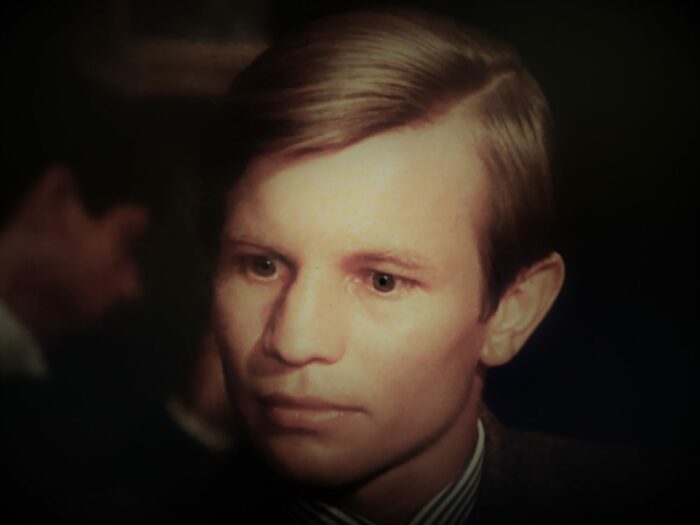
Detailed in The Making of Cabaret by Keith Garebian, it boils down to producer Harold Prince acquiring the rights to the source material first. Prince, who passed away in 2019, was a titan in musical theater. The recipient of 21 Tony awards over a career that produced 33 Broadway shows, he changed what a musical could be. In a way, perhaps it’s for the best he took charge of what would become Cabaret.
To that end Harold Prince employed the talents of playwright Joe Masteroff beside the songwriting team of Fred Ebb and John Kander. Adaptation isn’t necessarily a matter of mirroring content. So, the team made certain changes to characters from Isherwood’s novel as well as adding others such as the wonderfully unsettling Master of Ceremonies. Thematically, though, Cabaret captured the essence of Goodbye to Berlin providing snapshots of a lost era interwoven with striking social commentary. Opening in 1966, the musical received eleven Tony Award nominations, won eight, and ran for 1,165 shows. It was only a matter of time before Hollywood showed interest.
Initially, Cinerama Releasing came knocking. The company acted as a distributor for widescreen films made using the Cinerama process. They intended for Cabaret to be their first fully produced film, but the deal fell apart. Eventually, Allied Artists acquired the rights to the musical for 1.5 million dollars, splitting production costs with ABC Pictures.

When Bob Fosse heard about the film adaptation, he wanted to direct it. However, although he’d go on to become the only person to win a Tony, Oscar, and Emmy in the same year, he wasn’t a legend yet. Producers felt inclined towards someone more renowned such as Gene Kelly or Billy Wilder. Oscar-winning composer and Broadway producer, Cy Feuer, who was brought on to help produce the film version, championed Fosse as director. He convinced studio heads Fosse possessed the skills necessary to bring Cabaret to life on the big screen.
That’s interesting considering Fosse’s previous efforts directing and choreographing a film resulted in failure. He helmed the unsuccessful adaptation of a musical comedy called Sweet Charity (1969). The New York Times called it “a long, noisy, and, finally, dim imitation of its source material.” Perhaps haunted by that defeat, Fosse saw an opportunity for redemption with Cabaret.
The same might be said of Liza Minnelli. She auditioned for the role of Sally Bowles on Broadway, but producers ignored her Tony Award, insisting Liza needed more experience. Cy Feuer, however, cast her straight away for the film adaptation, and maybe having something to prove provided motivation. After all, her performance throughout drips with a certain desperation—the hunger for that praise only a loving audience’s eyes can deliver.
Gradually the rest of the cast came together. Michael York caught the role of Brian. Joel Grey agreed to reprise his award-winning portrayal of the Master of Ceremonies, and production began in Germany.
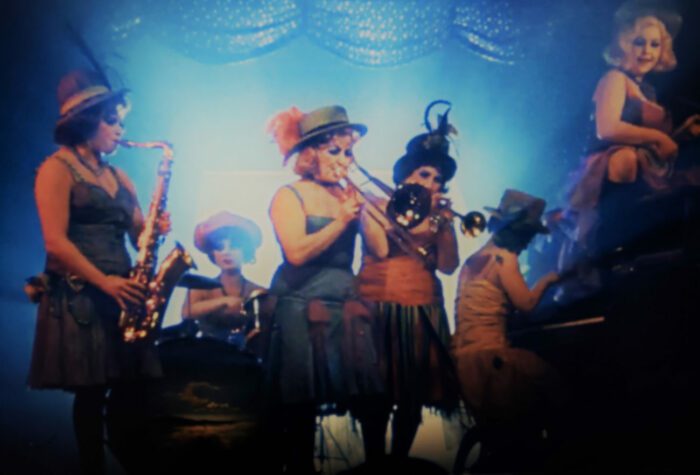
Shot in what was then West Germany, Cabaret found itself delayed for a short while by another film, Willy Wonka and the Chocolate Factory. Rusty Goffe, who played an Oompa-Loompa, recalled Fosse bursting onto the set everyday shouting, “When is this goddamn movie ending‽” Only after the chocolate factory wrapped could Cabaret finally shoot its indoor scenes.
Again, adaptation is not reflection. After failing to do Sweet Charity justice, Fosse understood this. Rather than bring the stage to the screen, he aimed for the idea at the heart of Cabaret. The thing is it’s hard to nail down one. Innocence inspiring willful ignorance, the tragedy of triumphant love unaware of where world history will take the story, freedom singing happily in the last few seconds before nightmares arrive to silence it—all apply. Yet, Fosse managed to include the lot thanks to interesting cinematic choices.
Spoilers ahead (for a fifty-year-old movie).
One theme throughout Cabaret is the way that world history pales in comparison to personal. Even events which will change the course of human affairs are easy to ignore in light of one’s own private issues. Consider a marvelously subtle scene where Sally is discussing the discovery she’s pregnant. This is a monumental moment for her, something that will affect the rest of her life. Yet, despite the gravity of her situation, one can’t help noticing a poster on a brick fence bearing the swastika. There’s always something bigger looming over the human race, yet it’s easy to forget such things entirely when personal matters demand attention.
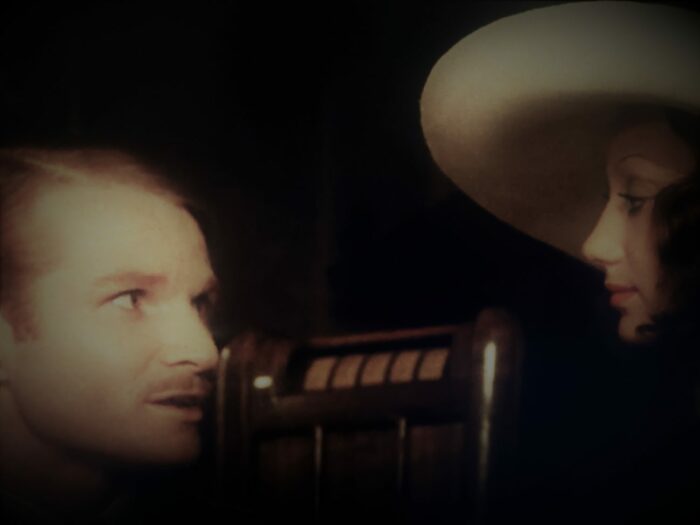
This wider awareness even lends to heartache that only hits the audience. Since the story takes place in the past, viewers know the course of things to come. When the character Fritz Wendel tries to marry the Jewish heiress Natalie Landauer, she turns him down until he reveals he too is Jewish. Passing as Protestant, he’s hidden the fact to escape from antisemitism but throws caution to the wind for the sake of romance. It would be a moving moment if not for the hideousness of the Holocaust the audience knows is right around the corner.
It’s not that Fritz is unaware of Nazis or their violent tendencies towards Jews. He’s actually worried some skull cracking brownshirt will come for him afterward, but aching for Natalie, he can’t imagine happiness without her in his life. The grand scheme of things is miniscule in comparison to matters of the heart and though history will be unkind in the long run, he can only see as far as the present.
These instances are hauntingly human. No one is immune from being distracted by the immediate needs of their personal problems. History may be in the making, but individual idiosyncrasies and pet peeves—heartbreak, money trouble, and rush hour congestion—make the bigger picture meaningless.
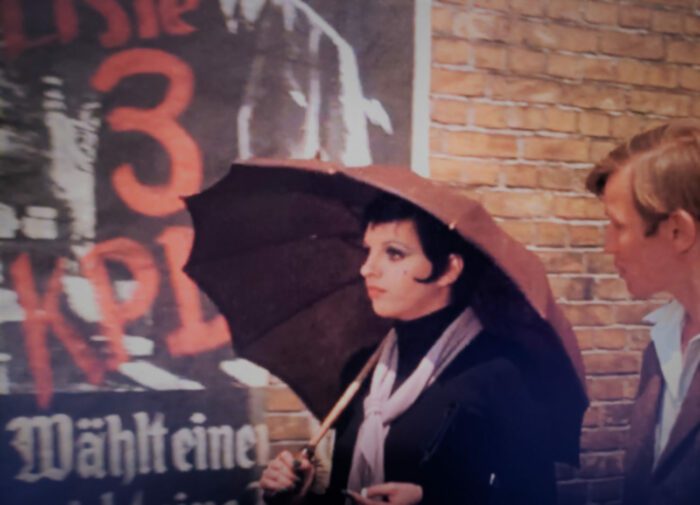
This notion permeates Cabaret. Moreover, it’s delivered in interesting ways. Sally and Brian will walk down the street discussing their personal problems, while behind them posters bear Nazis propaganda. In various instances, characters discuss plot points, while in the background, a news broadcast is playing. Although the audience may not understand any of the German, the word Nazis leaps out at the listener. The viewer understands these elements in a dreadful way the characters in Cabaret cannot.
For instance, Sally and Brian meet the bon vivant Baron Maximillian von Heune, played by Helmut Griem. Even as they drive through the bloody aftermath of a riot, a corpse on the ground beneath a sheet, Maximillian dismisses the Nazis as any kind of a threat. He actually considers them good since they keep the Communists in check, and he assumes they’ll settle down once someone grabs the reins.
None of this is done with a particularly heavy hand, but it all risks becoming cringingly cartoonish. Imagine for a minute if Liza Minnelli started high kicking down Berlin boulevards singing about the evils of antisemitism, or Michael York suddenly belted out the Broadway equivalent of “Nazis Punks Fuck Off”. It’s this restraint that gives Cabaret a clever edge over other musicals.
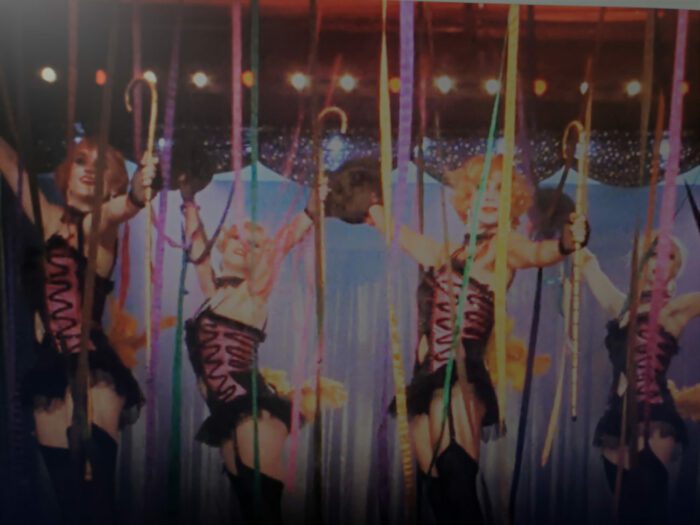
Instead of giving in to the surreal tendency to emote and explore through song at any given time, Cabaret takes the audience back to the Kit Kat Klub for such instances. Musical numbers still relate to recent events on screen, but they feel more plausible in this setting. It carries the added implication of this all being nothing more than distraction, especially when juxtaposed against other imagery.
One scene at the Kit Kat Klub features performers doing a variation of the schuhplattler. It’s a tradition German folk dance involving dancers in lederhosen stomping, clapping, and striking their shoes, thighs, and knees. It’s a comical bit made sinister by inserting between the dancer’s actions glimpses of Nazis goons thrashing a man to a pulp in an alley. Editing makes the slap-dance and the beating blend into one terrible moment.
Despite the satire that occurs in the Kit Kat Klub, any catharsis comedy provides is fleeting since reality is still looming outside. This sense of escapism being futile yet necessary is found throughout the film. It’s of particular importance since so many characters are at odds with what society has deemed acceptable.
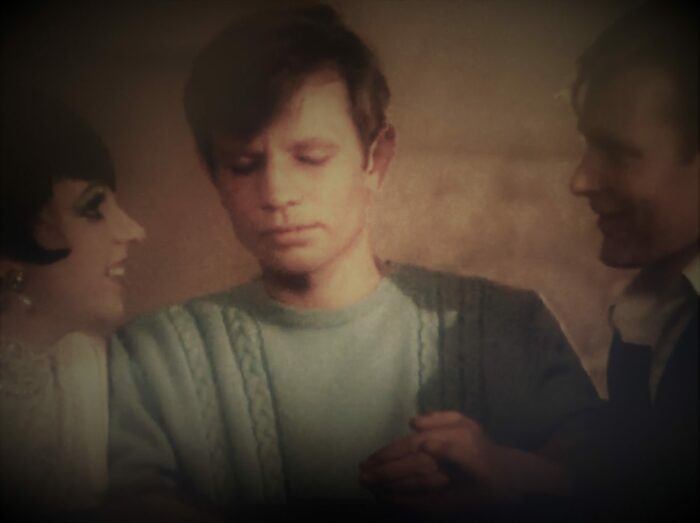
Early on, Sally attempts to draw Brian into bed only to find out he’s more interested in men. Eventually he feels the same romantic desire for her, and they begin a physically intimate relationship. This leads to concerns of infidelity as the couple becomes acquainted with the gregarious spendthrift Max. Such concerns are, interestingly enough, alleviated and inflamed by the fact Max has been having sex with Sally and Brian. The polyamorous paramours eventually break up, but it’s easy to see how even today it’s not the most common type of relationship.
That said, Cabaret doesn’t care. This isn’t a musical meant to distract the audience. Whatever respite they wanted from the woes of the world, Cabaret offers up all those things they might not want to see. Abortion, fascism, wealth disparity, and homosexuality, the musical thrusts up unflinching views of each because it knows what the audience wants. As the Master of Ceremonies sings in one of the show’s best-known songs “Willkommen”, “Leave your troubles outside. So, life is disappointing, forget it! In here, life is beautiful.” The thing is Cabaret won’t let the audience ignore reality.
The way the movie undermines that effort is glorious. Performers in the Kit Kat Klub look positively ghoulish in exaggerated makeup reminiscent of Expressionist film. The band is sweaty. Even the choreography, at times, seems deliberately mediocre. At times, Liza Minnelli is singing her heart out to a virtually empty room. For what would otherwise be a triumphant musical number, one or two drunks provide a smattering of applause.

The movie is not the Broadway production. In a way, that’s fantastic because watching one is not necessarily seeing the other. It means two takes on one idea, each remaining fresh should a viewer decide to partake in both. The differences in the narrative mean watching them won’t result in stale repetition. That’s partly because every version is a piece of the whole while remaining distinct. Still, it echoed the stage show in one respect. Cabaret earned ten Academy Award nominations, winning eight total including Best Director, Actress, and Cinematography.
The film adaptation is the culmination of several links in a chain tying history and fiction into an unapologetic tapestry. The evocative prose portraits of people and places penned by Christopher Isherwood remind of a lost era of eclectic liberalism. John van Druten’s adaptation focused the narrative found in Goodbye to Berlin, and Julie Harris turned its intriguing character into someone truly captivating. This caught the attention of revolutionary producer Harold Prince, who guided the play into a musical. From there, Bob Fosse sailed Cabaret onto the silver screen where Liza Minelli and others brought it to life.
The film isn’t the prettiest picture. Yet, the imperfections make it more honest. This isn’t a motion picture that conceals, it reveals the self-deception people are prone to, especially when reality is unpleasant. To paraphrase the poet John Keats, melancholy has a shrine in the temple of delights. Happiness at its height is the beginning of its decline, and no one wants the party to stop even when it’s obvious it should.
Yet, Cabaret compels a viewer to consider just that. Happiness is bound to end, so pretending it doesn’t is denial that wastes precious time. The party is over, though the end may’ve been preventable if someone did something. It’s a message as relevant today as when it first screened.


